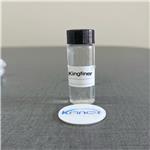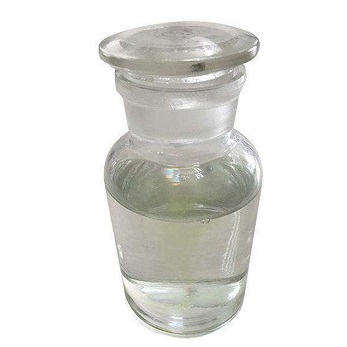- Linalyl acetate
-

- $5.00 / 25kg
-
2024-05-17
- CAS:115-95-7
- Min. Order: 1kg
- Purity: ≥99%
- Supply Ability: 200mt/year
- Linalyl acetate
-

- $5.00 / 1kg
-
2024-05-17
- CAS:115-95-7
- Min. Order: 1kg
- Purity: 99.5
- Supply Ability: 50 ton per month
- Linalyl acetate
-

- $0.00 / 1kg
-
2024-05-07
- CAS:115-95-7
- Min. Order: 1kg
- Purity: 0.99
- Supply Ability: 500000kg
|
| | Linalyl acetate Chemical Properties |
| Melting point | 85°C | | Boiling point | 220 °C(lit.) | | density | 0.901 g/mL at 25 °C(lit.) | | vapor density | 6.8 (vs air) | | vapor pressure | 0.1 mm Hg ( 20 °C) | | FEMA | 2636 | LINALYL ACETATE | | refractive index | n20/D 1.453(lit.) | | Fp | 194 °F | | storage temp. | -20°C | | solubility | Chloroform (Slightly), Methanol (Slightly) | | form | Liquid | | color | Clear colorless | | Odor | at 100.00 %. sweet green citrus bergamot lavender woody | | Odor Type | herbal | | Water Solubility | 499.8mg/L(25 ºC) | | JECFA Number | 359 | | Merck | 14,5496 | | BRN | 1724500 | | InChIKey | UWKAYLJWKGQEPM-LBPRGKRZSA-N | | LogP | 3.9 at 25℃ | | CAS DataBase Reference | 115-95-7(CAS DataBase Reference) | | NIST Chemistry Reference | 1,6-Octadien-3-ol, 3,7-dimethyl-, acetate(115-95-7) | | EPA Substance Registry System | Linalyl acetate (115-95-7) |
| | Linalyl acetate Usage And Synthesis |
| Description | Linalyl acetate belongs to monoterpene compound. It is a naturally occurring phytochemical found in many flowers and spice plants. It is the one of the principle components of essential oils of bergamont and lavender.1 It is a clear, colorless liquid with a boiling point of 220°C. Chemically, it is the acetate ester of linalool, and the two often occur in conjunction in the essential oils of Lavender and Lavandin.2
Linalyl acetate is an approved flavoring food additive. It is the most important fragrance ingredient for bergamot, lilac, lavender, linden, neroli, ylang-ylang, and fantasy nots. It is used in decorative cosmetics, fine fragrances, shampoos, toilet soaps and other toiletries as well as in non-cosmetic products such as household cleaners and detergents.3,4
| | Reference |
- https://pubchem.ncbi.nlm.nih.gov/compound/linalyl_acetate#section=Top
- A. Martin, V. Silva, L. Perez, J. Garcia-Serna, M. J. Cocero, Direct Synthesis of Linalyl Acetate from Linalool in Supercritical Carbon Dioxide: A Thermodynamic Study, Chemical Engineering & Technology, 2007, vol. 30, pp. 726-731
- H. Surbung, J. Panten, Common Fragrance and Flavor Materials: Preparation, Properties und Uses, 2006, ISBN 978-3-527-31315-0
- C. S. Letizia, J. Cocchiara, J. Lalko, A. M. Api, Fragrance material review on linalyl acetate, Food and Chemical Toxicology, 2003, vol. 41, pp. 965-976
| | Chemical Properties | Linalyl Acetate occurs as its isomer as the main component of lavender oil (30–60%, depending on the origin of the oil), of lavandin oil (25–50%, depending on the species), and of bergamot oil (30–45%). It has also been found in clary sage oil (up to 75%) and in a small amount in many other essential oils. Racemic linalyl acetate is a colorless liquid with a distinct bergamot–lavender odor.

Linalyl acetate is used extensively in perfumery. It is an excellent fragrance material for, among others, bergamot, lilac, lavender, linden, neroli, ylang-ylang, and fantasy notes (particularly chypre). Smaller amounts are used in other citrus products. Since linalyl acetate is fairly stable toward alkali, it can also be employed in soaps and detergents. | | Chemical Properties | Linalyl acetate has a characteristic bergamot–lavender odor and persistent sweet, acrid taste. | | Occurrence | Reported found in the essential oils of bergamot, lavender, clary sage and lavandin; also identified among
the constituents of the essential oils of Salvia officinalis, petitgrain, sassafras, neroli, lemon, Italian lime, jasmine, Mentha citrata,
Mentha aquatica, Thymus mastichina, etc; also reported in abundant quantities in the essential oil from flowers, leaves and stems
of Tagetes patula, in the distillate from leaves of Citrus aurantifolia from India, and in the essential oil of Mentha arvensis. Also
reported found in citrus peel oils and juices, berries, peach, celery, tomato, cinnamon, clove, nutmeg, pepper, thymus, grape wines,
avocado, mushroom, marjoram, mango, cardamom, coriander, gin, origanum, lovage, laurel, myrtle leaf, rosemary, sage and mastic
gum oil. | | Uses | In perfumery. | | Uses | Linalyl Acetate ermentative production of medium or short chain length alcohol, esters and/or glucosides by metabolically engineered microorganism. | | Preparation | Linalyl acetate is synthesized by two methods:
1) Esterification of linalool requires special reaction conditions since it tends to
undergo dehydration and cyclization as it is an unsaturated tertiary alcohol.
These reactions can be avoided as follows: esterification with ketene in the
presence of an acidic esterification catalyst below 30 °C results in the formation
of linalyl acetate without any by-products. Esterification can be achieved in good yield, with boiling acetic anhydride, whereby the acetic
acid is distilled off as it is formed; a large excess of acetic anhydride must
be maintained by continuous addition of anhydride to the still vessel.
Highly pure linalyl acetate can be obtained by transesterification of tert-butyl
acetate with linalool in the presence of sodium methylate and by continuous
removal of the tert-butanol formed in the process.
2) Dehydrolinalool, obtained by ethynylation of 6-methyl-5-hepten-2-one, can
be converted into dehydrolinalyl acetatewith acetic anhydride in the presence
of an acidic esterification catalyst. Partial hydrogenation of the triple bond
to linalyl acetate can be carried out with, for example, palladium catalysts
deactivated with lead. | | Definition | ChEBI: 3,7-dimethylocta-1,6-dien-3-yl acetate is a monoterpenoid that is the acetate ester of linalool. It forms a principal component of the essential oils from bergamot and lavender. It is an acetate ester and a monoterpenoid. It is functionally related to a linalool. | | Aroma threshold values | Detection: 1 ppm | | Taste threshold values | Taste characteristics at 5 ppm: floral, green, waxy, terpy, citrus, herbal and spicy nuances. | | General Description | Linalyl acetate is a monoterpene ester mainly found in lavandula essential oil. It is used as a flavoring agent in food industries, as well as a preservative additive in cosmetics and fragrances such as soaps, colognes, perfumes, and skin lotions. | | Contact allergens | Structurally close to linalool, linalyl acetate is the main component of lavender oil and is commonly used in fragrances and toiletries, and in household cleaners and detergents as well. By autoxidation, it leads mainly to hydroperoxides, with a high sensitizing potent. | | Synthesis | Normally prepared by direct acetylation of linalool; another method starts from myrcene hydrochloride, anhydrous
sodium acetate and acetate anhydride in the presence of a catalyst; all synthetic methods tend to avoid the simultaneous formation
(because of isomerization) of terpenyl and geranyl acetate. |
| | Linalyl acetate Preparation Products And Raw materials |
|